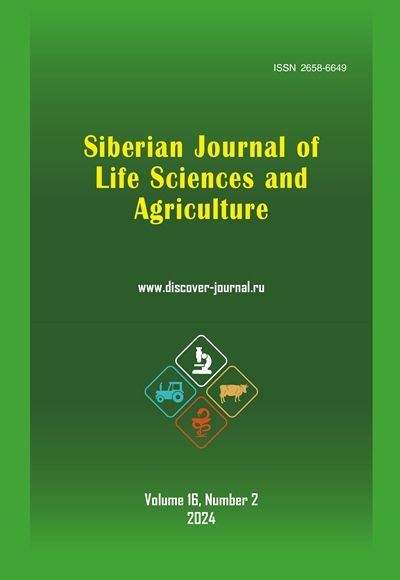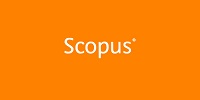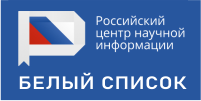ПЕРСПЕКТИВЫ ИСПОЛЬЗОВАНИЯ ВЫДЕЛЕННЫХ В ВОСТОЧНОЙ СИБИРИ ГРИБОВ РОДА Trichoderma ПРОТИВ ФИТОПАТОГЕНОВ
Аннотация
Обоснование. Во всем мире потери сельскохозяйственной продукции связаны с болезнями растений, чаще всего вызываемыми микроскопическими грибами. Одним из наиболее эффективных способов борьбы с ними является применение различных химических фунгицидов. Но избыточная обработка подобными препаратами способна привести к негативным последствиям. Для решения этой проблемы исследуются альтернативы химической борьбе с помощью использования микробов-антагонистов. Особый интерес представляют грибы рода Trichoderma, которые можно использовать как биопрепарат, обладающий потенциалом для защиты от ряда заболеваний у растений.
Цель. Изучение антагонистических взаимодействий двух микромицетов рода Trichoderma, выделенных со спилов древесины в Восточной Сибири, и фитопатогенных грибов.
Материалы и методы. Таксономическую принадлежность, выделенных микромицетов, определяли по макро- и микроморфологическим признакам с использованием светового микроскопа Primo Star (Zeiss, Германия). Молекулярно-генетический анализ проводился на базе Всероссийской коллекции промышленных микроорганизмов на основе анализа последовательности рибосомальных генов. Антагонистическую активность Trichoderma тестировали in vitro методом встречных культур, в 5 повторностях.
Результаты. По результатам морфологического и молекулярно-генетического анализа выделенные штаммы были отнесены к видам Trichoderma atroviride и Trichoderma harzianum. Показано, что выделенные штаммы Trichoderma эффективно подавляют развитие исследуемых патогенных грибов (до 50-80%).
Заключение. Таким образом, представленные в работе данные позволяют сделать вывод о возможности использования Trichoderma atroviride и Trichoderma harzianum в дальнейшем изучении средств биоконтроля болезней растений.
Информация о спонсорстве. Исследование выполнено при финансовой поддержке гранта РНФ № 23-26-10008.
Скачивания
Литература
Список литературы
Астапчук И.Л., Якуба Г.В., Насонов А.И. Скрининг штаммов-антагонистов Trichoderma Pers. к возбудителям гнили корней яблони из рода Fusarium Link // Садоводство и виноградарство. 2022. № 5. P. 47-53. https://doi.org/10.31676/0235-2591-2022-5-47-53
Всероссийская коллекция микроорганизмов. http://www.vkm.ru/rus
Кондакова О.Э., Гродницкая И.Д. Оценка биологической активности музейных культур микроорганизмов-антагонистов и их использование для предпосевной обработки семян сосны обыкновенной (Pinus sylvestris L.) in vitro // Вестник Томского государственного университета. Биология. 2018. № 42. С. 54–68. https://doi.org/10.17223/19988591/42/3
Литовка Ю.А. Эколого-биологические особенности и биоконтроль грибов рода Fusarium, распространенных в наземных экосистемах Средней Сибири: автореферат диссертации на соискание учёной степени доктора биологических наук. Томск, 2019.
Научный центр «Курчатовский институт». Научно-исследовательский институт генетики и селекции промышленных микроорганизмов. https://vkpm.genetika.ru
Садыкова B. C., Бондарь П. Н. Перспективы использования грибов p. Trichoderma в за-щите злаков от корневых гнилей в Сибири // Вестник КрасГАУ. 2010. №2. C. 34-39. https://doi.org/10.7868/S0555109915030149
Юрченко Е.Г., Астапчук И.Л., Якуба Г.В., Савчук Н.В., Насонов А.И. К изучению антимикотического потенциала грибов рода Trichoderma spp. в отношении фитопатогенов Fusarium spp. возбудителей болезней яблони и винограда // Сборник трудов конференции ФГБНУ «Северо-Кавказский федеральный научный центр садоводства, виноградарства, виноделия». 2020. С. 396-407.
Яковлева М.Т., Борисова В.Б. Эффективность местных штаммов клубеньковых бактерий на продуктивность Люцерны // International agricultural journal. 2021. № 5. С. 272-279. https://doi.org/10.24412/2588-0209-2021-10372
Al-Ani L.K.T. A patent survey of Trichoderma spp. (from 2007 to 2017). / Singh H., Keswani C., Singh S. (eds) // Intellectual property issues in microbiology. Springer, Singapore, 2019, pp. 163–192. http://doi.org/10.1007/978-981-13-7466-1_10
Arasu M.V., Vijayaraghavan P., Al-Dhabi N.A., Choi K.C., Moovendhan M. Biocontrol of Trichoderma gamsii induces soil suppressive and growth-promoting impacts and rot disease-protecting activities // Journal of Basic Microbiology, 2023, vol. 63, № 7, pp. 801-813. https://doi.org/10.1002/jobm.202300016
Bazghaleh, N.; Prashar, P.; Woo, S.; Vandenberg, A. Effects of Lentil Genotype on the Coloni-zation of Beneficial Trichoderma Species and Biocontrol of Aphanomyces Root Rot // Micro-organisms, 2020, vol. 8, 1290 p. https://doi.org/10.3390/microorganisms8091290
Bozdeveci, A., Karaoğlu, Ş.A. Determination of Biocontrol Properties of Two Local Tricho-derma Isolates // Biol Bull Russ Acad Sci, 2023. https://doi.org/10.1134/S1062359023602057
Guzmán-Guzmán P., Kumar A., de los Santos-Villalobos S., Parra-Cota F.I., Orozco-Mosqueda Md.C., Fadiji A.E., Hyder S., Babalola O.O., Santoyo G. Trichoderma Species: Our Best Fungal Allies in the Biocontrol of Plant Diseases—A Review // Plants, 2023, vol. 12, № 3, 432 p. https://doi.org/10.3390/plants12030432
Haghi Z., Mostowfizadeh-Ghalamfarsa R.,Steinberg C. The efficacy of Iranian Pythium oligandrum isolates in biocontrol of soil-borne fungal pathogens of tomato // Journal of Plant Pathology, 2023, vol. 105, pp. 185-196. https://doi.org/10.1007/s42161-022-01245-5
Harman G.E., Doni F., Khadka R.B., Uphoff N. Endophytic strains of Trichoderma increase plants’ photosynthetic capability // Journal of Applied Microbiology, 2019, vol. 130, № 2, pp. 529-546. https://doi.org/10.1111/jam.14368
Hautsalo J., Vestberg M., Parikka P., Finni S. et al. Biological control of strawberry crown rot is substrate dependent phenomenon // Journal of Berry Research, 2016, vol. 6, № 1. pp. 65-79. https://doi.org/10.3233/JBR-150110
Illescas M., Morán-Diez M.E., Martínez de Alba Á.E., Hermosa R., Monte E. Effect of Trichoderma asperellum on wheat plants’ biochemical and molecular responses, and yield under different water stress conditions // International Journal of Molecular Science, 2022, vol. 23, № 12, 6782 p. https://doi.org/10.3390/ijms23126782
Jiang F., Peng Ye., Sun Q. Pesticides exposure induced obesity and its associated diseases: recent progress and challenges // Journal of Future Foods, 2022, vol. 2, pp. 119-124. doi.org/10.1016/j.jfutfo.2022.03.005
Karamchandani B.M., Chakraborty S., Dalvi S.G. Chitosan and its derivatives: Promising biomaterial in averting fungal diseases of sugarcane and other crops // Journal of Basic Microbiology, 2022, vol. 62, № 5, pp. 533-554. https://doi.org/10.1002/jobm.202100613
Kekalo A.Yu., Zargaryan N.Yu., Nemchenko V.V. Effectiveness of fungicidal protection of spring wheat against powdery mildew and tan spot // Siberian Herald of Agricultural Science, 2023, vol. 53, № 1, pp. 45-52. https://doi.org/10.26898/0370-8799-2023-1-6
Kumar J., Kumar M., Tomar A., Vaishali, Kumar P., Chand P. Morphological and molecular characterization of Trichoderma spp. from Rhizosphere Soil and their antagonistic activity against Fusarium spp // International Journal of Plant and Soil Science, 2021, vol. 33, № 19, pp. 100-112. https://doi.org/10.9734/ijpss/2021/v33i1930605
Lyubenova A., Rusanova М., Nikolova M., Slavov S.B. Plant extracts and Trichoderma spp: possibilities for implementation in agriculture as biopesticides // Biotechnology and Biotechnological Equipment, 2023, vol. 37, № 1, pp. 159-166. https://doi.org/10.1080/13102818.2023.2166869
Manzar N., Kashyap A.S., Goutam R.S., Rajawat M.V.S., Sharma P.K., Sharma S.K., Singh H.V. Trichoderma: Advent of Versatile Biocontrol Agent, Its Secrets and Insights into Mechanism of Biocontrol Potential // Sustainability, 2022, vol. 14, № 19, 12786 p. https://doi.org/10.3390/su141912786
Martínez-Padrón H.Y., Herrera-Mayorga V., Paredes-Sánchez F. A., Lara-Ramírez E. E., Torres-Castillo J. A., Rodríguez-Herrera R., López-Santillán J. A., Osorio-Hernández E. In vitro evaluation of the antagonistic activity of native strains of Trichoderma spp. against Fusarium spp. // Journal of Environmental Science and Health, 2023, part B, vol. 58, № 2, pp. 195-202. https://doi.org/10.1080/03601234.2023.2185014
Meher J., Rajput R.S., Bajpai R., Teli B., Sarma B.K. Trichoderma: A globally dominant commercial biofungicide // Trichoderma: Agricultural Applications and Beyond, Soil Biology, Springer Nature: Cham, Switzerland, 2020, vol. 61, pp. 195-208. http://doi.org/10.1007/978-3-030-54758-5_9
National Library of Medicine. National Center for Biotechnology Information. http://www.ncbi.nlm.nih.gov/blast. Accessed 25 April 2023.
Pani S., Kumar A., Sharma A. Trichoderma harzianum: An Overview // Bulletin of Environment, Pharmacology and Life Sciences, 2021, vol. 10, № 6, pp 32-39.
Pramanick B., Bera A., Saha P., Barman A. Soil Microflora and Their Interaction with Plants Under Changing Climatic Scenarios // Microbial Symbionts and Plant Health: Trends and Ap-plications for Changing Climate, 2023, vol. 1, №. 2, pp. 19-40. https://doi.org/10.1007/978-981-99-0030-5_2
Putranto W.A., Nugroho R. A., Hardiyanta S.P., Cahyaningrum D.Ch. Are Trichoderma atroviride and Trichoderma harzianum effective to control Fusarium associated with tomato wilt? // Microbiology Indonesia, 2021, vol. 15, № 3, pp. 84-90. https://doi.org/10.5454/mi.15.3.2
Rola K., Majewska E., Chowaniec K. Interaction effect of fungicide and chitosan on non-target lichenized fungi // Chemosphere, 2023, vol. 316, 137772 p. https://doi.org/10.1016/j.chemosphere.2023.137772
Sana B. S., Sumaira H., Dar M. S. et al. Morpho-cultural and molecular characterization of Trichoderma species from apple rhizosphere of North-western Himalayan temperate region of India. Preprint (Version 1) available at Research Square, 2023. https://doi.org/10.21203/rs.3.rs-2429359/v1
Tucci M., Ruocco M., Masi L. D., Palma M. D., Lorito M. The beneficial effect of Trichoderma spp. on tomato is modulated by the plant genotype // Molecular Plant Pathology, 2011, vol. 12, № 4, pp. 341–354. https://doi.org/10.1111/j.1364-3703.2010.00674.x
Tyskiewicz R., Nowak A., Ozimek E., Jaroszuk-Sciseł J. Trichoderma: the current status of its application in agriculture for the biocontrol of fungal phytopathogens and stimulation of plant growth // International Journal of Molecular Sciences, 2022, vol. 23, № 4, 2329 p. https://doi.org/10.3390/ijms23042329
Viglas J., Olejnikova P. Trichoderma atroviride: an isolate from forest environment with sec-ondary metabolites with high antimicrobial potential // Acta Chimica Slovaca, 2019, vol. 12, № 1, pp. 46-55. https://doi.org/10.2478/acs-2019-0008
Xue P., Liu X., Jia H., Yuan H., Liu B., Zhang J., He Z. Environmental behavior of the chiral fungicide epoxiconazole in earthworm-soil system: Enantioselective enrichment, degradation kinetics, chiral metabolite identification, and biotransformation mechanism // Environment International, 2022, vol. 167, 107442 p. https://doi.org/10.1016/j.envint.2022.107442
Yassin M.T., Mostafa A.A.F., Al-Askar A.A., Sayed S.R.M., Rady A.M. Antagonistic activity of Trichoderma harzianum and Trichoderma viride strains against some fusarial pathogens causing stalk rot disease of maize, in vitro // Journal of King Saud University – Science, 2021, vol. 33, № 3. 101363 p. https://doi.org/10.1016/j.jksus.2021.101363
References
Astapchuk I.L., Yakuba G.V., Nasonov A.I. Skrining shtammov-antagonistov Trichoderma Pers. k vozbuditelyam gnili korney yabloni iz roda Fusarium Link [Screening of antagonist strains of Trichoderma Pers. to pathogens of apple tree root rot from the genus Fusarium Link]. Sadovodstvo i vinogradarstvo, 2022, № 5, pp. 47-53. https://doi.org/10.31676/0235-2591-2022-5-47-53
Vserossiyskaya kollektsiya mikroorganizmov [All-Russian Collection of Microorganisms]. http://www.vkm.ru/rus
Kondakova O.E., Grodnitskaya I.D. Otsenka biologicheskoy aktivnosti muzeynykh kul'tur mikroorganizmov-antagonistov i ikh ispol'zovanie dlya predposevnoy obrabotki semyan sosny obyknovennoy (Pinus sylvestris L.) in vitro [Assessment of the biological activity of museum cultures of antagonistic microorganisms and their use for pre-sowing treatment of Scots pine (Pinus sylvestris L.) seeds in vitro]. Vestnik Tomskogo gosudarstvennogo universiteta. Biologiya, 2018, № 42, pp. 54–68. https://doi.org/10.17223/19988591/42/3
Litovka Yu.A. Ekologo-biologicheskie osobennosti i biokontrol' gribov roda Fusarium, rasprostranennykh v nazemnykh ekosistemakh Sredney Sibiri: avtoreferat dissertatsii na soiskanie uchenoy stepeni doktora biologicheskikh nauk [Ecological and biological features and biocontrol of fungi of the genus Fusarium, widespread in terrestrial ecosystems of Central Si-beria: abstract of the dissertation for the discovery of the scientific degree of Doctor of Biologi-cal Sciences]. Tomsk, 2019.
Nauchnyy tsentr «Kurchatovskiy institut». Nauchno-issledovatel'skiy institut genetiki i selektsii promyshlennykh mikroorganizmov [Scientific Center "Kurchatov Institute". Research Institute for Genetics and Selection of Industrial Microorganisms]. https://vkpm.genetika.ru
Sadykova B. C., Bondar' P. N. Perspektivy ispol'zovaniya gribov p. Trichoderma v zashchite zlakov ot kornevykh gniley v Sibiri [Prospects for the use of Trichoderma fungi to protect grain crops from root rot in Siberia.]. Vestnik KrasGAU, 2010, no. 2, pp. 34-39. https://doi.org/10.7868/S0555109915030149
Yurchenko E.G., Astapchuk I.L., Yakuba G.V., Savchuk N.V., Nasonov A.I. K izucheniyu an-timikoticheskogo potentsiala gribov roda Trichoderma spp. v otnoshenii fitopatogenov Fusari-um spp. vozbuditeley bolezney yabloni i vinograda [To study the antimycotic potential of fungi of the genus Trichoderma spp. against phytopathogens Fusarium spp. pathogens of apples and grapes]. Proceedings of the conference North Caucasus Federal Scientific Center of Horticul-ture, Viticulture, Winemaking, 2020, pp. 396-407.
Yakovleva M.T., Borisova V.B. Effektivnost' mestnykh shtammov kluben'kovykh bakteriy na produktivnost' Lyutserny [Efficiency of local strains of nodule bacteria on Lucerne productivi-ty]. International agricultural journal, 2021, no. 5, pp. 272-279. https://doi.org/10.24412/2588-0209-2021-10372
Al-Ani L.K.T. A patent survey of Trichoderma spp. (from 2007 to 2017). In: Singh H., Keswani C., Singh S. (eds) Intellectual property issues in microbiology. Springer, Singapore, 2019, pp. 163–192. http://doi.org/10.1007/978-981-13-7466-1_10
Arasu M.V., Vijayaraghavan P., Al-Dhabi N.A., Choi K.C., Moovendhan M. Biocontrol of Trichoderma gamsii induces soil suppressive and growth-promoting impacts and rot disease-protecting activities. Journal of Basic Microbiology, 2023, vol. 63, no. 7, pp. 801-813. https://doi.org/10.1002/jobm.202300016
Bazghaleh, N.; Prashar, P.; Woo, S.; Vandenberg, A. Effects of Lentil Genotype on the Coloni-zation of Beneficial Trichoderma Species and Biocontrol of Aphanomyces Root Rot. Microor-ganisms, 2020, vol. 8, 1290 p. https://doi.org/10.3390/microorganisms8091290
Bozdeveci, A., Karaoğlu, Ş.A. Determination of Biocontrol Properties of Two Local Tricho-derma Isolates. Biol Bull Russ Acad Sci, 2023. https://doi.org/10.1134/S1062359023602057
Guzmán-Guzmán P., Kumar A., de los Santos-Villalobos S., Parra-Cota F.I., Orozco-Mosqueda Md.C., Fadiji A.E., Hyder S., Babalola O.O., Santoyo G. Trichoderma Species: Our Best Fungal Allies in the Biocontrol of Plant Diseases—A Review. Plants, 2023, vol. 12, no. 3, 432 p. https://doi.org/10.3390/plants12030432
Haghi Z., Mostowfizadeh-Ghalamfarsa R., Steinberg C. The efficacy of Iranian Pythium oligandrum isolates in biocontrol of soil-borne fungal pathogens of tomato. Journal of Plant Pathology, 2023, vol. 105, pp. 185-196. https://doi.org/10.1007/s42161-022-01245-5
Harman G.E., Doni F., Khadka R.B., Uphoff N. Endophytic strains of Trichoderma increase plants’ photosynthetic capability. Journal of Applied Microbiology, 2019, vol. 130, no. 2, pp. 529-546. https://doi.org/10.1111/jam.14368
Hautsalo J., Vestberg M., Parikka P., Finni S. et al. Biological control of strawberry crown rot is substrate dependent phenomenon. Journal of Berry Research, 2016, vol. 6, no. 1. pp. 65-79. https://doi.org/10.3233/JBR-150110
Illescas M., Morán-Diez M.E., Martínez de Alba Á.E., Hermosa R., Monte E. Effect of Trichoderma asperellum on wheat plants’ biochemical and molecular responses, and yield under different water stress conditions. International Journal of Molecular Science, 2022, vol. 23, no. 12, 6782 p. https://doi.org/10.3390/ijms23126782
Jiang F., Peng Ye., Sun Q. Pesticides exposure induced obesity and its associated diseases: recent progress and challenges. Journal of Future Foods, 2022, vol. 2, pp. 119-124. https://doi.org/10.1016/j.jfutfo.2022.03.005
Karamchandani B.M., Chakraborty S., Dalvi S.G. Chitosan and its derivatives: Promising biomaterial in averting fungal diseases of sugarcane and other crops. Journal of Basic Microbiology, 2022, vol. 62, no. 5, pp. 533-554. https://doi.org/10.1002/jobm.202100613
Kekalo A.Yu., Zargaryan N.Yu., Nemchenko V.V. Effectiveness of fungicidal protection of spring wheat against powdery mildew and tan spot. Siberian Herald of Agricultural Science, 2023, vol. 53, no. 1, pp. 45-52. https://doi.org/10.26898/0370-8799-2023-1-6
Kumar J., Kumar M., Tomar A., Vaishali, Kumar P., Chand P. Morphological and molecular characterization of Trichoderma spp. from Rhizosphere Soil and their antagonistic activity against Fusarium spp. International Journal of Plant and Soil Science, 2021, vol. 33, no. 19, pp. 100-112. https://doi.org/10.9734/ijpss/2021/v33i1930605
Lyubenova A., Rusanova М., Nikolova M., Slavov S.B. Plant extracts and Trichoderma spp: possibilities for implementation in agriculture as biopesticides. Biotechnology and Biotechnological Equipment, 2023, vol. 37, no. 1, pp. 159-166. https://doi.org/10.1080/13102818.2023.2166869
Manzar N., Kashyap A.S., Goutam R.S., Rajawat M.V.S., Sharma P.K., Sharma S.K., Singh H.V. Trichoderma: Advent of Versatile Biocontrol Agent, Its Secrets and Insights into Mechanism of Biocontrol Potential. Sustainability, 2022, vol. 14, no. 19, 12786 p. https://doi.org/10.3390/su141912786
Martínez-Padrón H.Y., Herrera-Mayorga V., Paredes-Sánchez F. A., Lara-Ramírez E. E., Torres-Castillo J. A., Rodríguez-Herrera R., López-Santillán J. A., Osorio-Hernández E. In vitro evaluation of the antagonistic activity of native strains of Trichoderma spp. against Fusarium spp. Journal of Environmental Science and Health, 2023, part B, vol. 58, no. 2, pp. 195-202. https://doi.org/10.1080/03601234.2023.2185014
Meher J., Rajput R.S., Bajpai R., Teli B., Sarma B.K. Trichoderma: A globally dominant commercial biofungicide. Trichoderma: Agricultural Applications and Beyond, Soil Biology, Springer Nature: Cham, Switzerland, 2020, vol. 61, pp. 195-208. http://doi.org/10.1007/978-3-030-54758-5_9
National Library of Medicine. National Center for Biotechnology Information. http://www.ncbi.nlm.nih.gov/blast
Pani S., Kumar A., Sharma A. Trichoderma harzianum: An Overview. Bulletin of Environment, Pharmacology and Life Sciences, 2021, vol. 10, no. 6, pp. 32-39.
Pramanick B., Bera A., Saha P., Barman A. Soil Microflora and Their Interaction with Plants Under Changing Climatic Scenarios. Microbial Symbionts and Plant Health: Trends and Ap-plications for Changing Climate, 2023, vol. 1, no. 2, pp. 19-40. https://doi.org/10.1007/978-981-99-0030-5_2
Putranto W.A., Nugroho R. A., Hardiyanta S.P., Cahyaningrum D.Ch. Are Trichoderma atroviride and Trichoderma harzianum effective to control Fusarium associated with tomato wilt? Microbiology Indonesia, 2021, vol. 15, no. 3, pp. 84-90 https://doi.org/10.5454/mi.15.3.2
Rola K., Majewska E., Chowaniec K. Interaction effect of fungicide and chitosan on non-target lichenized fungi. Chemosphere, 2023, vol. 316, 137772 p. https://doi.org/10.1016/j.chemosphere.2023.137772
Sana B. S., Sumaira H., Dar M. S. et al. Morpho-cultural and molecular characterization of Trichoderma species from apple rhizosphere of North-western Himalayan temperate region of India. Preprint (Version 1) available at Research Square, 2023. https://doi.org/10.21203/rs.3.rs-2429359/v1
Tucci M., Ruocco M., Masi L. D., Palma M. D., Lorito M. The beneficial effect of Trichoderma spp. on tomato is modulated by the plant genotype. Molecular Plant Pathology, 2011, vol. 12, no. 4, pp. 341–354. https://doi.org/10.1111/j.1364-3703.2010.00674.x
Tyskiewicz R., Nowak A., Ozimek E., Jaroszuk-Sciseł J. Trichoderma: the current status of its application in agriculture for the biocontrol of fungal phytopathogens and stimulation of plant growth. International Journal of Molecular Sciences, 2022, vol. 23, no. 4, 2329 p. https://doi.org/10.3390/ijms23042329
Viglas J., Olejnikova P. Trichoderma atroviride: an isolate from forest environment with sec-ondary metabolites with high antimicrobial potential. Acta Chimica Slovaca, 2019, vol. 12, no. 1, pp. 46-55. https://doi.org/10.2478/acs-2019-0008
Xue P., Liu X., Jia H., Yuan H., Liu B., Zhang J., He Z. Environmental behavior of the chiral fungicide epoxiconazole in earthworm-soil system: Enantioselective enrichment, degradation kinetics, chiral metabolite identification, and biotransformation mechanism. Environment International, 2022, vol. 167, 107442 p. https://doi.org/10.1016/j.envint.2022.107442
Yassin M.T., Mostafa A.A.F., Al-Askar A.A., Sayed S.R.M., Rady A.M. Antagonistic activity of Trichoderma harzianum and Trichoderma viride strains against some fusarial pathogens causing stalk rot disease of maize, in vitro. Journal of King Saud University – Science, 2021, vol. 33, no. 3, 101363 p. https://doi.org/10.1016/j.jksus.2021.101363
Просмотров аннотации: 215 Загрузок PDF: 163
Copyright (c) 2024 Victoria E. Kuznetsova, Elena A. Matveeva, Lyudmila A. Belovezhets

Это произведение доступно по лицензии Creative Commons «Attribution-NonCommercial-NoDerivatives» («Атрибуция — Некоммерческое использование — Без производных произведений») 4.0 Всемирная.






















































